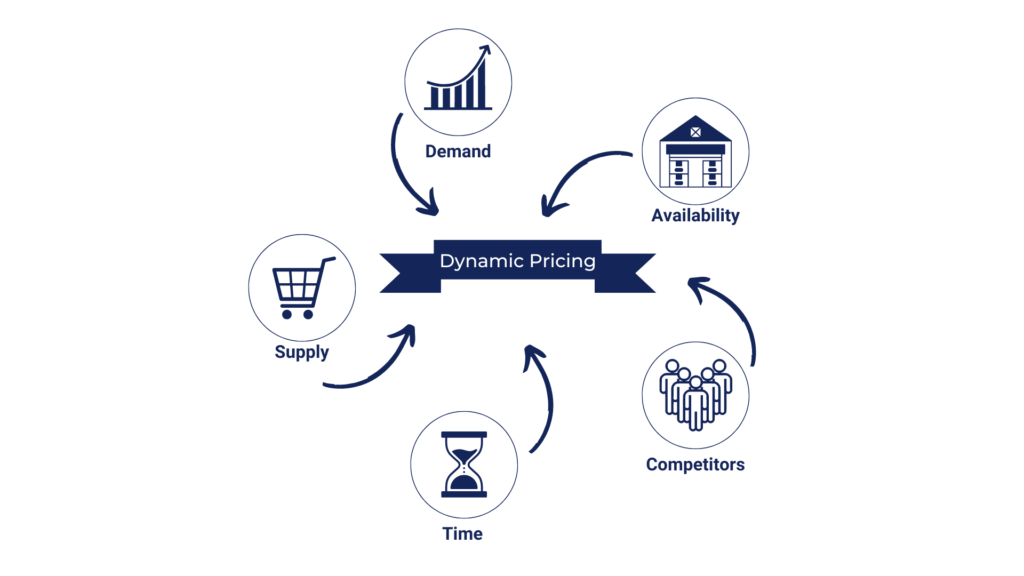In the competitive landscape of e-commerce, pricing plays a pivotal role in attracting customers, driving sales, and maximizing revenue. Traditional pricing strategies often fall short in adapting to dynamic market conditions and consumer behaviors. However, with the advent of Artificial Intelligence (AI), e-commerce businesses now have the power to implement dynamic pricing strategies that optimize pricing in real-time. In this article, we explore how AI is revolutionizing e-commerce pricing optimization.
Understanding Dynamic Pricing and AI
What is Dynamic Pricing?
Dynamic pricing, also known as demand-based pricing or real-time pricing, is a strategy where prices are adjusted based on various factors such as demand, competitor pricing, inventory levels, and customer behavior. Unlike static pricing, dynamic pricing allows businesses to set prices dynamically to maximize profitability and stay competitive in the market.
How Does AI Facilitate Dynamic Pricing?
AI algorithms analyze vast amounts of data in real-time to identify patterns, trends, and correlations. By leveraging machine learning and predictive analytics, AI can forecast demand, predict consumer behavior, and optimize prices accordingly. This enables e-commerce businesses to set optimal prices that maximize revenue and profit margins.

Benefits of AI-Powered Dynamic Pricing
- Maximizing Revenue
AI-driven dynamic pricing ensures that prices are continuously optimized to maximize revenue. By adjusting prices based on real-time market conditions and customer demand, e-commerce businesses can capture additional revenue opportunities and increase profitability. - Competitive Advantage
With AI-powered dynamic pricing, e-commerce businesses can stay ahead of competitors by quickly responding to changes in market dynamics and adjusting prices accordingly. This agility allows businesses to maintain a competitive edge and attract price-sensitive customers. - Personalized Pricing
AI algorithms can analyze customer data and behavior to offer personalized pricing tailored to individual preferences and purchasing history. This personalized approach enhances customer satisfaction, loyalty, and lifetime value, ultimately driving long-term revenue growth.
Implementing AI-Powered Dynamic Pricing
- Data Integration
Successful implementation of AI-powered dynamic pricing requires integrating data from various sources such as sales data, competitor pricing, market trends, and customer behavior. This data integration enables AI algorithms to make informed pricing decisions. - Algorithm Training
AI algorithms need to be trained using historical data to understand patterns and correlations. E-commerce businesses must provide sufficient training data to ensure accurate predictions and optimal pricing recommendations. - Continuous Monitoring and Optimization
Dynamic pricing is an ongoing process that requires continuous monitoring and optimization. E-commerce businesses need to regularly assess market conditions, competitor pricing, and customer behavior to adjust prices effectively and maximize revenue.
Conclusion
In conclusion, AI-powered dynamic pricing is transforming e-commerce pricing optimization by enabling businesses to set prices dynamically based on real-time market conditions and consumer behavior. By leveraging AI algorithms, e-commerce businesses can maximize revenue, gain a competitive advantage, and offer personalized pricing to customers. As technology continues to advance, the adoption of AI in e-commerce pricing will become increasingly prevalent, reshaping the future of online retail.
Frequently Asked Questions (FAQs)
- How does dynamic pricing benefit e-commerce businesses?
Dynamic pricing helps e-commerce businesses maximize revenue by adjusting prices based on real-time market conditions, competitor pricing, and customer demand. - Is AI-powered dynamic pricing suitable for small e-commerce businesses?
Yes, AI-powered dynamic pricing can benefit businesses of all sizes by enabling them to stay competitive and maximize revenue. - Are there any risks associated with dynamic pricing?
While dynamic pricing offers significant benefits, there are risks such as price perception issues and backlash from customers if pricing changes are perceived as unfair or inconsistent. - How do AI algorithms determine optimal pricing recommendations?
AI algorithms analyze vast amounts of data including historical sales data, competitor pricing, market trends, and customer behavior to predict demand and optimize prices. - Can dynamic pricing be implemented across all product categories?
Yes, dynamic pricing can be applied to various product categories, although the effectiveness may vary depending on factors such as product demand, competition, and price elasticity.











